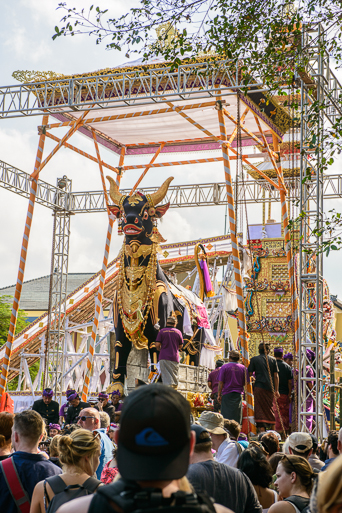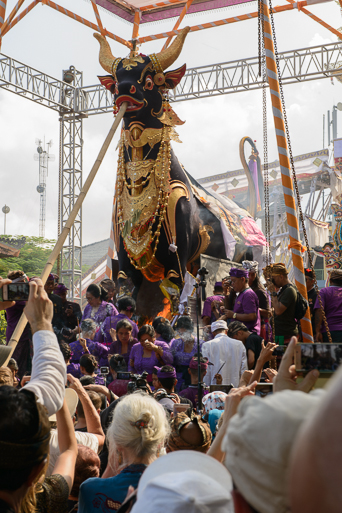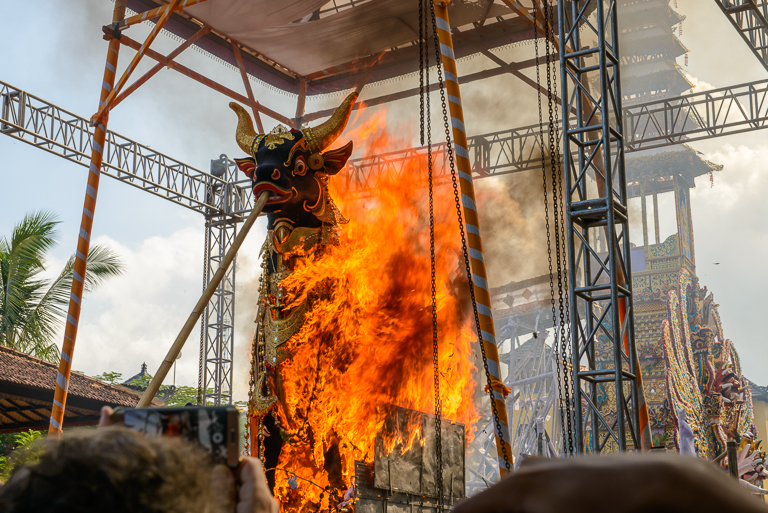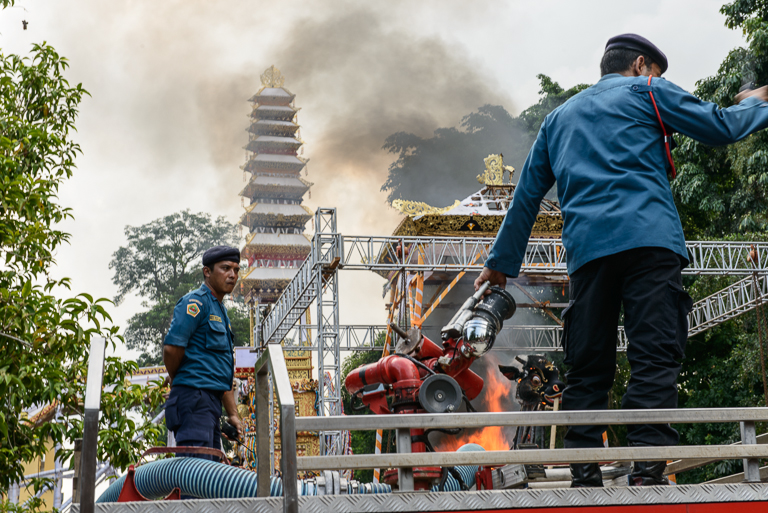Cremation Ceremony for a Balinese Prince
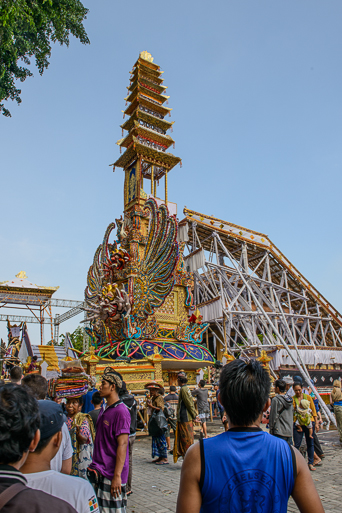
I arrived in Ubud, Bali, on Sunday 8th May having learnt that a public cremation procession and ceremony was taking place for a royal prince, Cokorda Putra Widura, who had recently died young from an asthma attack. Preparations had been under way for several days; the procession was scheduled to depart from the Royal Palace to the cemetery on the afternoon of my arrival.
I quickly dropped off my luggage and took my camera. Unfortunately, my driver, who had collected me from the airport and taken me to the villas where I was staying, said that the car had been assigned to another trip, but he kindly offered to the me into town on the back of his motorbike. This was possibly an unwise decision as there was no spare crash helmet and, had there been an accident, my travel insurance would have been invalidated. Fortuntately the short journey was uneventful, other than for the dense traffic in town for the ceremony.
I arrived to find a colourful crowd, patiently waiting for the cremation to begin.
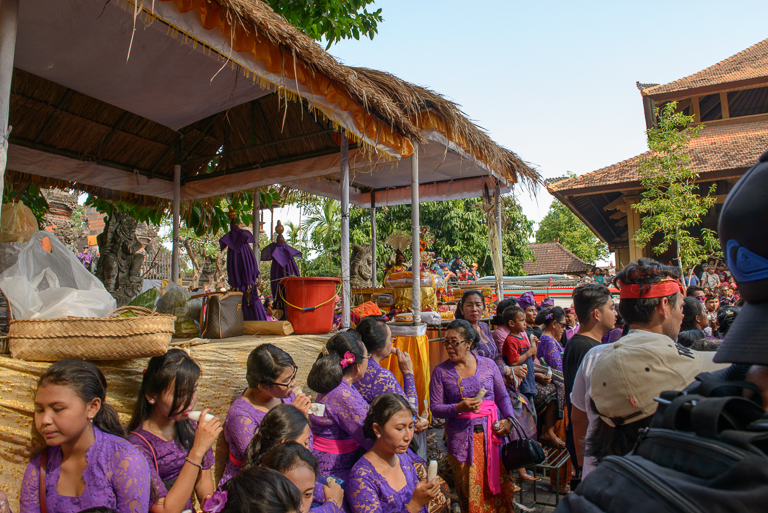
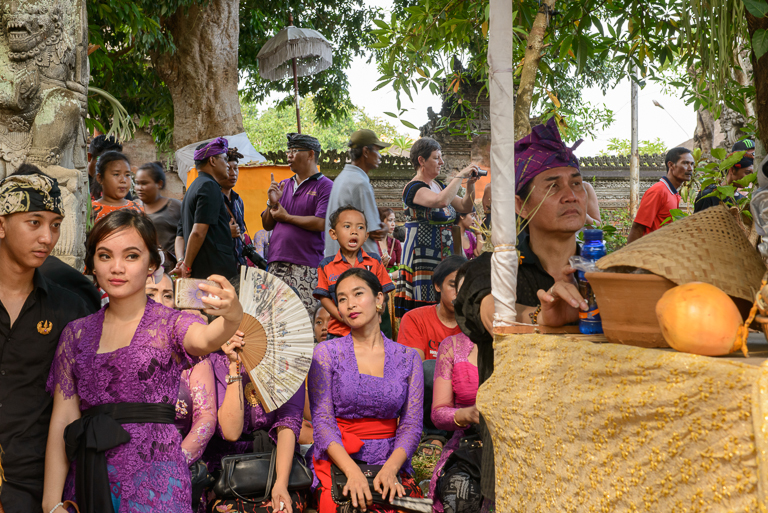
I was sensitive to the need, particularly as a foreign visitor, to act in a respectful and discrete manner.
I had already missed the procession. This consisted of two hand-drawn ‘vehicles’: a tower, containing the coffin, preceded by a symbolic sacrificial bull. On arrival at a courtyard beside the cemetery, the coffin had been lowered from the tower, using a slide attached to the side. It was in the process of being placed inside the bull as I arrived.
The area was crowded with both local people, some hundreds in purple costume – dark for funerals – and ordinary local mourners, along with many tourists, most of whom were dressed inappropriately in shorts and other holiday dress. I had to move nimbly from spot to spot to approach the bull, which was being prepared for lighting. Torches were applied and it quickly caught fire, the flames gradually engulfing the bull and eventually igniting the frame in which it was placed.
With observers’ attention focussed on the flames, the main focus of the event, I was presented with the opportunity to photograph those present. These included the teams of two fire engines at either side of the pyre, there in case the flames got out of hand. A drone can be seen overhead, one of two filming the occasion.
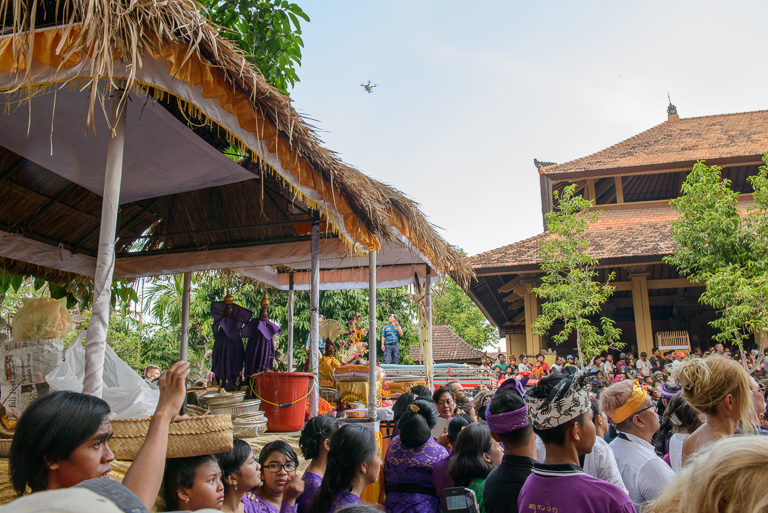
Cremations are not regarded as sad affairs, as the deceased will be reincarnated, or eventually freed from the cycle of reincarnation. An old man is here being led away by smiling helpers.
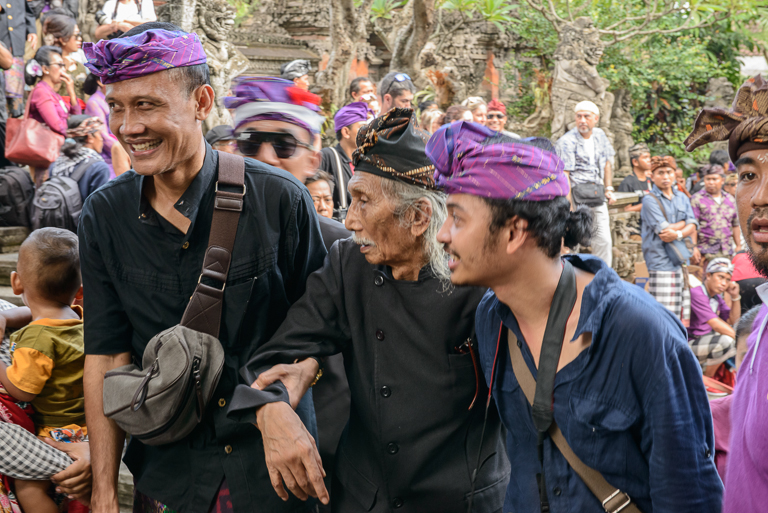
These five ladies, evidently enjoying a photo opportunity, are harmoniously dressed in the purple that I was informed represents the temple attached to the Royal Palace, although an alternative account suggested it was a dark colour selected by the funeral arranger in consultation with the family.
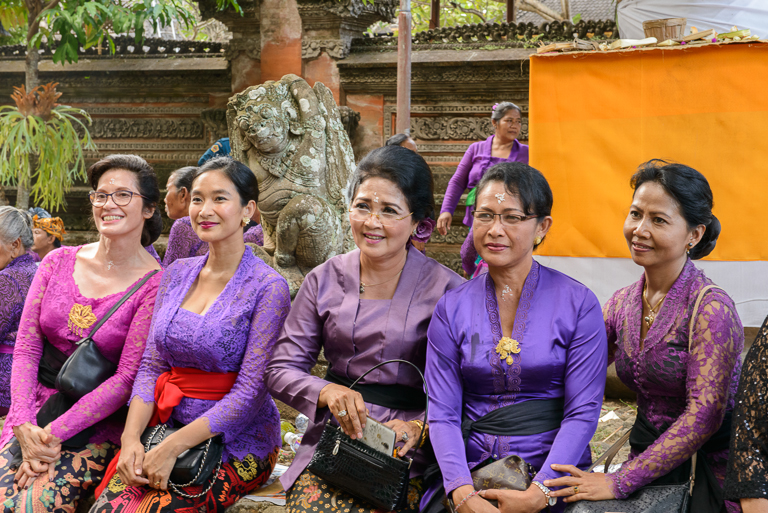
I met a local photographer, whom I engaged in conversation and who described himself as a member of the paparazzi. He proved a useful source of information.
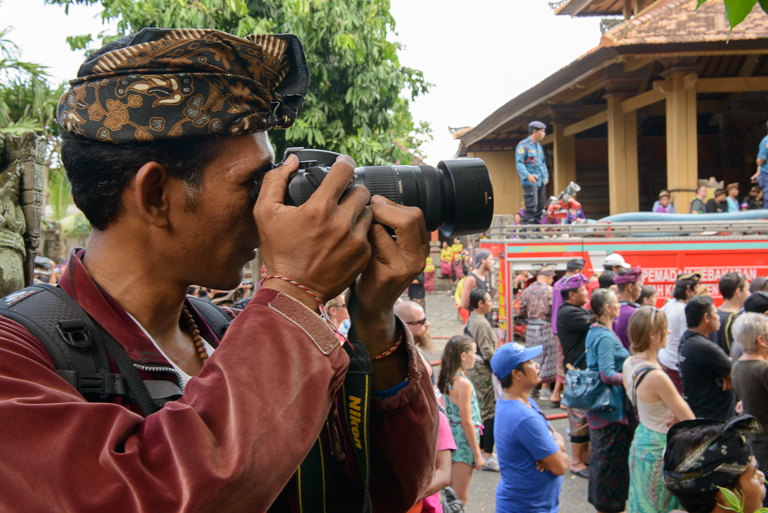
The drones attracted a good deal of attention from all present.
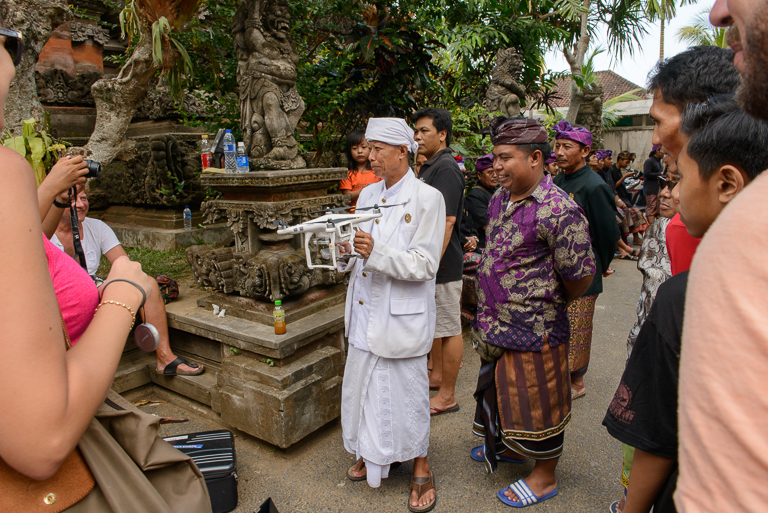
Meanwhile, the pyre burnt ever more fiercely. Bits fell off which were potentially dangerous to the crowd, given the height of the beast and the fact that it had ignited the frame within which it sat. Eventually the pyre was hosed down and the crowds, including me, dispersed. It had been an interesting experience, albeit resulting from a family loss. I feel privileged to have witnessed it.
An account, covering both the preparations and the event itself, by Rio Helmi, a respected local photographer and journalist, can be found here
Description of Balinese cremation ceremony from Wikipedia:
Ngaben, or Cremation Ceremony, is a funeral ritual performed in Bali to send the deceased to the next life. The body of the deceased will be placed as if sleeping, and the family will continue to treat the deceased as sleeping. No tears are shed, because the deceased is only temporarily absent and will reincarnate or find final rest in Moksha (freeing from the reincarnation and death cycle).
The proper day of the ceremony is always a matter of consulting a specialist on ceremony days. On the day of the ceremony, the body of the deceased is placed inside a coffin. This coffin is placed inside a sarcophagus resembling a buffalo (Lembu) or in a temple structure (Wadah) made of papier-maché and wood. This sarcophagus is then borne to the cremation site in a procession, which is almost never walked in a straight line. This is done to confuse evil spirits and keep them away from the deceased.
The climax of a Ngaben is the burning of the sarcophagus containing the body of the deceased. The fire is viewed as necessary to free the spirit from the body and enable reincarnation.
Ngaben is not always immediately performed. For members of the elite castes, it is normal to perform the ritual individually for the deceased within three days. People of lower social classes opt for a more economic solution where they first bury the deceased, who is then cremated with the village’s other dead in a mass ceremony.
